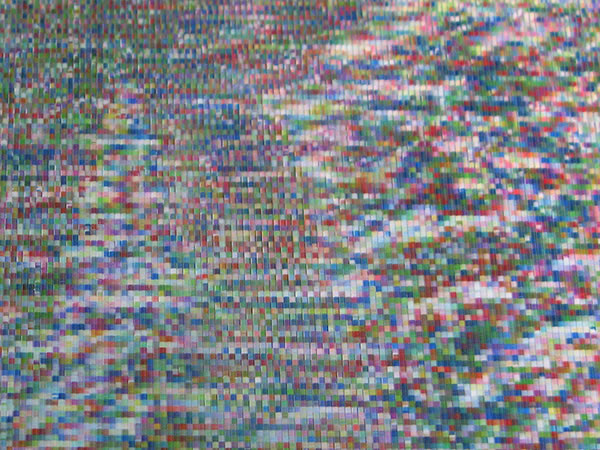
Colorado Snow Drifts
Early in 2008 I was invited to become an artist case study within a research department titled FADE (Fine Art Digital Environment) at the University of the Arts London by Professor Paul Coldwell. The project, The Personalised Surface within Fine Art Digital Printmaking, has enabled me to engage completely with the production of lenticular prints. Lenses were sourced and sponsored by DP Lenticular. Software for interlacing images was rejected, and simple, if laborious, techniques developed in Photoshop. It is entirely feasible now to play with lenticular image creation using an inkjet printer in the studio.
Lenticular experiments within the project have continued an exploration of optical effects translated into paintings since 2007:
Archival inkjet prints range in scale from approximately A5 to A2 paper sizes. Each work is unique, employing a different configuration of motion and colour effects within an expanding number of scenes.

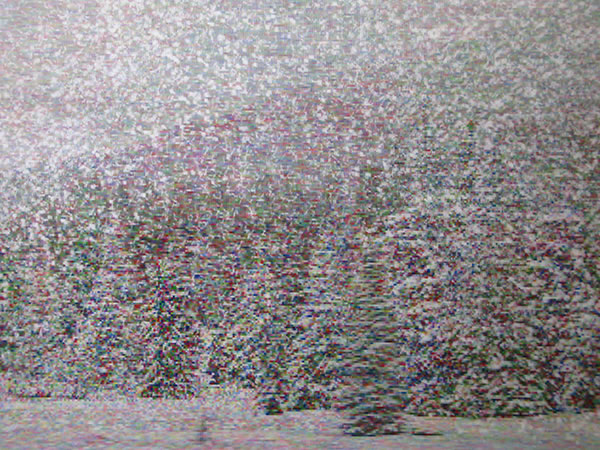

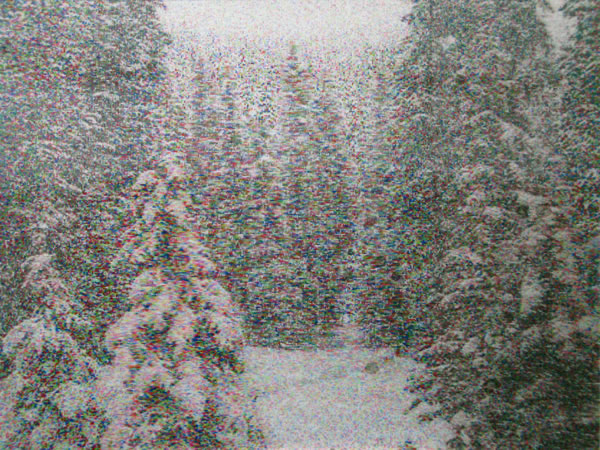
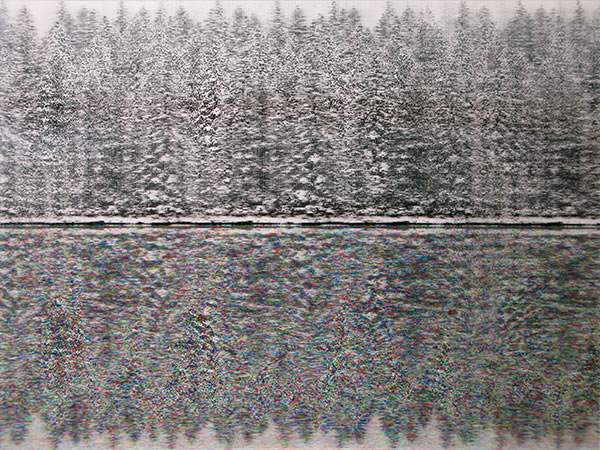
Visualising ways in which to translate a snow scene into a lenticular image, following the example of the Colorado Snow Effect paintings, is not straightforward, but offers tantalising possibilities. The implementation of both 3D and animation effects on an image necessarily low on tonal information is a curious conundrum. The paintings are concerned absolutely with thresholds of recognition, a quality likely to be either exacerbated by animating the coloured pixels or crudely reversed through 3D rendering. Dividing the scene up into cut out layers of receding space cancels out some of the three-dimensional ambiguities of digital noise; so many experiments were made with receding layers of pixellated falling and rising snow. These “flurrying” effects were introduced to the scenes at a later stage to reintroduce atmospheric depth. Other experiments have introduced animated horizontal bars to give the impression of poorly tracked analogue video. Stills from amateur footage of cable car rides have been interlaced and warped. Composite scenes have been produced by digitally cloning trees, suggestive of a limited appreciation of nature’s diversity through a categorising, scientific mentality, and endless tracts of farmed coniferous forest. All visual material is Internet sourced from pictures taken in Colorado.
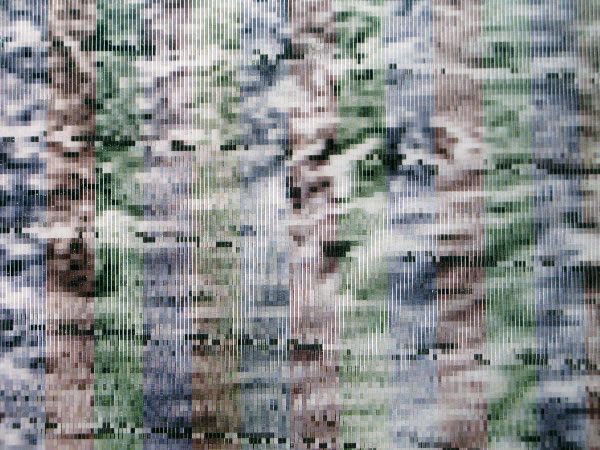
Exploring the technical limitations of lenticular printmaking offers visual metaphors for loss and emergence of memory, frozen, yet still alive, behind an icily transparent sheet of plastic, a technological barrier to accessing nature.

Close-up showing interlaced print and lenticular sheet before being stuck together.